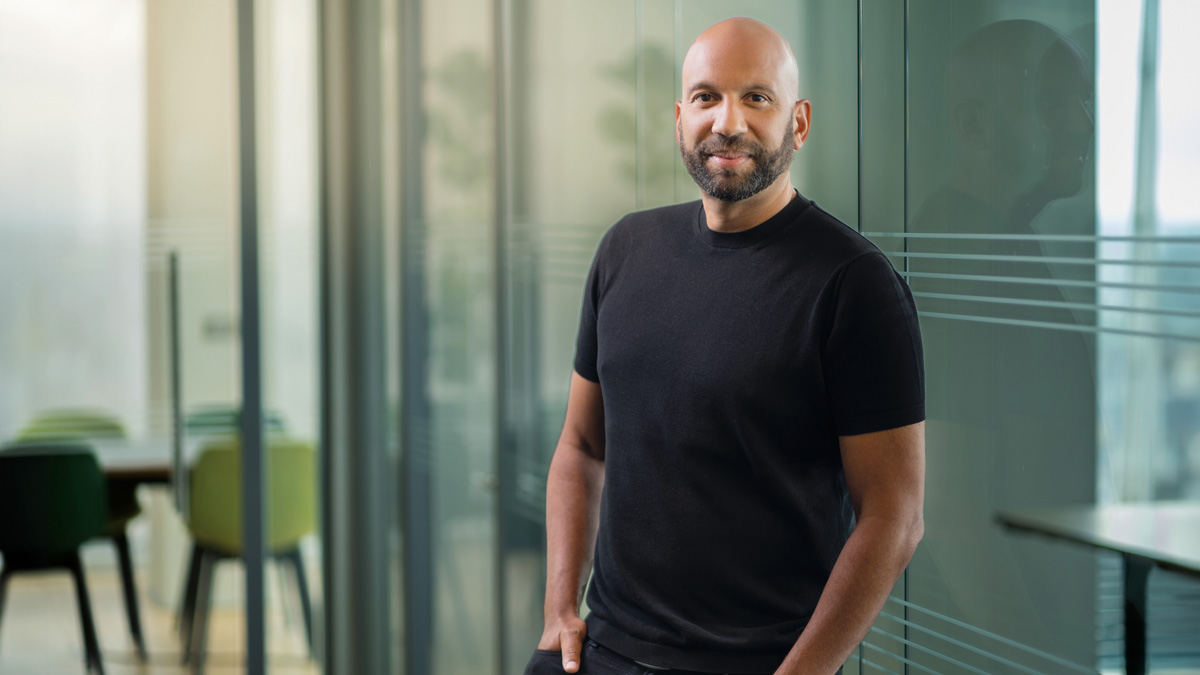Rethinking management: The story of Jellyfish’s non-hierarchical model
Jellyfish co-founder Rob Pierre explains how he pioneered a system that ripped up traditional ways of managing and promoting people in favour of something more equitable

We are all used to having managers at work. Someone we report to who sets our objectives, monitors our progress and provides support and guidance. Who listens to our gripes and puts us forward for pay raises and promotions (or performance plans and firings). Someone who we answer to.
Now imagine a company where that isn’t the case. Where employees are almost all individual contributors responsible for their own progress and career advancement.
Does that sound better – or does it sound like chaos? Most companies have a corporate pyramid structure, but at the digital consultancy Jellyfish, that was not the case. It did away with line managers and heads of department, instead offering career “levels” and linear progression. The aim was to eradicate the typical corporate pyramid structure that, as founder, former chief executive and chairman Rob Pierre believes, can hamper careers.
It meant that in every role, progression went as follows: executive manager, senior manager, director, senior director, executive, vice president and chief solutions officer. Each level had a salary band standardised across the company but then weighted by location and capability.
So, for example, the standard salary band for a director might be £50,000 to £60,000 but for an HR director that would be weighted to 0.9 but for a data scientist to 1.4. Equally, a role in Mumbai, India would be weighted to 0.4, while one in San Francisco is 1.8.
Empowering autonomy
Instead of line managers, each team member has what Pierre dubs a “support network”. This breaks down the roles of a traditional manager into areas such as developing key skills, supporting on personal matters and mentoring career progression. The person doing all of these will be someone different, meaning no one’s job is solely managing people and that you don’t have to have someone more senior than you leave the business to progress.
“That means we don’t have all our best practitioners doing all the administrative tasks around managing teams,” Pierre says. “It means you don’t need management in the same way. But everyone has to be clear on the initiatives they’re working on and how that contributes to the objectives of your department – and the business.
“What that leads to is people autonomously creating development plans and structuring work to prioritise initiatives and tasks, so they have maximum impact. Everything is plotted on an impact versus effort graph. Everyone is educated and encouraged to not do the things you feel comfortable doing but have little impact, rather to keep looking at what has the maximum impact.”
Progression was also different at Jellyfish. Rather than yearly pay review cycles or a manager having to put someone forward for a promotion, everyone is responsible for their own career. Every six months (although this becomes less regular the more senior someone becomes) staff can put forward a business case for why they should be promoted, highlighting how the value they bring has increased.
The cases are anonymised and judged by a panel, which determines if the person who applied should have a pay rise and/or promotion. More than 2,000 people were promoted through the process, with Pierre crediting it for creating a more egalitarian organisation that offered promotions based on performance and outcomes.
Breaking the Hierarchy
One of the big mindset shifts that was required was a move away from roles and responsibilities to meeting business objectives. Pierre describes how the traditional job description, with its list of what people should be doing, merely creates an even longer list of things people don’t have to do. He does not want staff to think like that. Instead, he wants people to take the initiative and match their skills and capabilities to the projects the company needs doing at any time.
“What you’re doing is matching capabilities and attributes to tasks and initiatives,” he says. “It’s quite interesting how quickly that eradicates the role mindset. People realise they have the skills, knowledge, experience and even the passion to take accountability for an initiative that ladders up to the mission and goal of the company.”
Accountability is an idea Pierre is particularly keen on. One of the things he most often bemoans in the traditional hierarchy is how it creates layers of management that mean someone higher up the chain is accountable for something you are delivering. It results, he says, in people taking credit for projects they have barely worked on when they go well and laying the blame elsewhere when they don’t.
One person – the best person for the job, not the most senior – was responsible for a project. They worked with a steering committee of around eight available to offer help, advice and expertise to ensure it is delivered.
“People don’t need someone else babysitting them,” he says. “The first thing a company needs are its vision and missions, then its objectives as a company, then all its departmental objectives. Then you create the initiatives that need doing and match people accordingly.”
Not everything Pierre introduced went down well with staff. During Covid, he introduced a work health dashboard that monitored when people were working. He likens it to a Fitbit that shows when you haven’t hit your 10,000-step target. Glassdoor reviews suggest staff were not so keen.
However, Pierre points to key areas of success. One was that the best and most senior people were doing more work with clients, rather than spending time on administrative tasks, so they had more billable hours and clients were happier. It also improved diversity, because people didn’t have to wait for a more senior person to leave to progress their career.
The company also saw retention rates increase because senior people didn’t hit a ceiling and then leave. Among the most senior staff, retention increased from less than five years to more than seven. That also helped Jellyfish save on recruitment and training fees – as well as meaning it kept knowledge and experience inside the business rather than seeing it leave.
“It’s evidence that people felt a purpose, that they weren’t being suppressed and that there was a future opportunity for them at Jellyfish,” says Pierre. “We also had a culture where we weren’t fighting against each other, it was us against the problem. We didn’t have the company politics that manifest in meetings and team dynamics.”
Boutique thinking
He blames hierarchical structures for many ills in modern business. So many executives feel a need to keep knowledge and expertise to themselves to prove their worth and wield power over others. In the company’s case, they were encouraged to share and be transparent. That, he believes, led to a shift in how the company did business.
“Most businesses are constantly busy and trying to deal with the symptoms. We wanted to go straight to the cause and systemically change things. We started off with a thematic goal: we wanted to be the biggest boutique agency in the world. That made us think, as you’d find in a boutique, how do we get the most skilled person doing the task?” he says.
The company grew rapidly from its founding in 2005 to a business with more than £220m in revenue and more than 2,200 staff across 38 offices and clients including Disney, Netflix, Uber and Spotify. It was bought by The Brandtech Group last year in a deal that created a company with more than $1bn in revenues.
Pierre is no longer in charge of the day-to-day running of Jellyfish, having stepped down post-acquisition. And while it isn’t clear if the agency will retain its structure going forward, Pierre believes it’s a system that can work for other organisations.
“I think any service business, any people-heavy business, can work like this,” he says. “We’ve got something that can really work. But it is the whole vector versus jpeg analogy: you don’t want to run a business like a jpeg so that as soon as it starts scaling it loses pixelation, it loses integrity. Instead, it needs to scale with the opportunities.”



